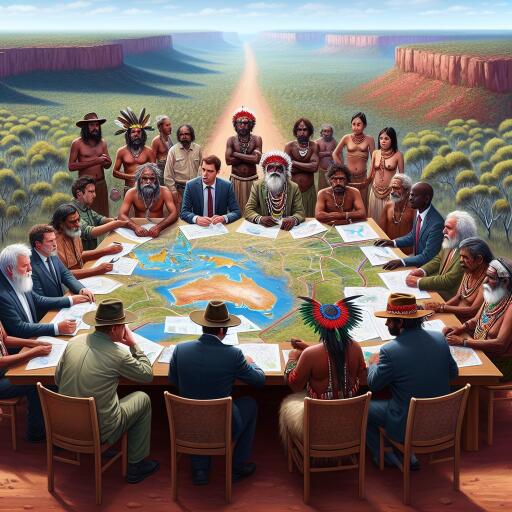
Indigenous Australians want a seat at the table when it comes to conservation. Here’s how we might get there
Indigenous Australians, custodians of the land for over sixty thousand years, are seeking more significant roles in the stewardship and preservation of their ancestral lands and waters. Their deep, time-honored connection to their environment encompasses a wealth of knowledge and cultural practices that are vital in the conservation of Australia’s unique biodiversity.
In addressing the need for a collaborative approach to land management, a recent project focused on the Bundjalung peoples of Australia’s east coast illustrates a promising pathway forward. By placing Indigenous knowledge and leadership at the forefront, this initiative has outlined a method for prioritizing culturally significant species and habitats in conservation efforts, proving that a synergy between Western scientific methods and Indigenous wisdom can enhance environmental stewardship.
The concept of ‘Country’ is fundamental to Indigenous Australians’ worldview. It encompasses not only the physical landscape but also spiritual beliefs, cultural practices, and familial connections. For Indigenous communities, certain animals and plants are not merely species to be conserved; they represent integral parts of their lore and cultural identity. As one Bundjalung elder articulated, these species are the “teachers of Country,” signifying the deep interconnections between the land, its inhabitants, and the people who have stewarded it for millennia.
A collaborative project with the Bundjalung-owned Jagun Alliance set the stage for an Indigenous-led approach, observing strict cultural protocols and safeguarding Indigenous cultural and intellectual property. The initiative brought together Indigenous experts and community members through on-Country workshops and surveys, engaging them in a process to identify key species and habitats for collaborative management.
The outcomes highlighted several species as conservation priorities for the Bundjalung people, including the koala, goannas, and the coastal emu, among others. Significantly, the project emphasized the importance of wetlands, grasslands, and the “big scrub” as crucial habitats. Identified threats to these species included lack of Indigenous decision-making in land management, the need for cultural burns, and the impacts of invasive species and climate change.
The Bundjalung proposals for management actions encompassed community gatherings on Country, cultural burns, water release for cultural objectives, and the management of cultural sites. These actions, holistic in nature, aim at a landscape-wide restoration and preservation effort, differing fundamentally from the species-specific approaches often seen in conventional conservation strategies.
One revealing aspect of the project was the spotlight on the koala (boorabee in the Bundjalung language), illustrating a clear opportunity for Indigenous-led conservation under the national recovery plan, which already recognizes the need for Indigenous leadership in conservation efforts. Such initiatives signify a step towards the integration of Indigenous practices with state and federal conservation strategies.
This model, prioritizing Indigenous input and leadership, suggests a transformative shift in how conservation could be approached in Australia and potentially globally. While recognizing the diverse perspectives within the Bundjalung community and other Indigenous groups, the project offers a structured process that can be adapted and applied across different landscapes and communities.
An inclusive approach, combining traditional ecological knowledge with modern conservation science, offers promising avenues for the sustainable management of Australia’s fragile ecosystems. As Indigenous Australians seek more substantial roles in environmental governance, their involvement not only acknowledges their rightful place at the table but also leverages their unique insights and practices, which have sustained these landscapes through countless generations.
Embracing Indigenous-led conservation is not just about giving voice to the first peoples of Australia; it’s about enriching our collective efforts to protect and nurture the environment. It is a testament to the fact that when we look after Country, it looks after us all.





Leave a Reply